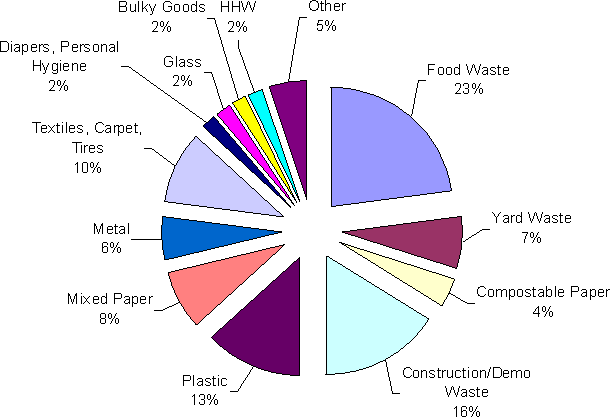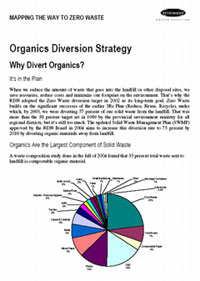Residential Food Waste Collection - The Green Bin Program
By the end of 2011 more than 52,000 single family homes in Nanaimo, Lantzville, Parksville, Qualicum Beach, and RDN Electoral Areas A, B, C, E, F, G and H had weekly curbside food waste collection service.The Green Bin Program helped establish this region as a national leader in solid waste management, and put the RDN on track to achieving its goal of diverting 75 per cent of solid waste from the Regional Landfill.
- Organics Diversion Strategy - Background
- Commercial Food Waste Diversion
- Residential Food Waste Collection Pilot Project
The Zero Waste component of the RDN's Solid Waste Management Plan sets out a range of programs to increase waste diverted from the Regional Landfill by 75% by 2010. The plan identifies organics diversion as a key measure to achieve this goal by turning waste into a resource and conserving valuable landfill space.
A waste composition study completed in fall 2004 revealed that 34% of the total waste sent to the Regional Landfill is compostable organic material consisting of food waste, soiled paper products and yard waste. The RDN's Organics Diversion strategy provides information on how organic waste will be diverted from disposal and serves as a framework for ongoing education and promotion.
The Organics Diversion Strategy has two main components: commercial and residential food waste diversion. The commercial food waste diversion program began in June 2005 with the banning of commercial food waste from the Regional Landfill. A one-year residential food waste collection pilot project began in October 2007 and will provide the information required to develop a region-wide curbside program.
2004 Waste Composition Study


